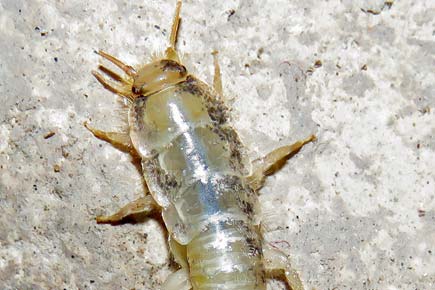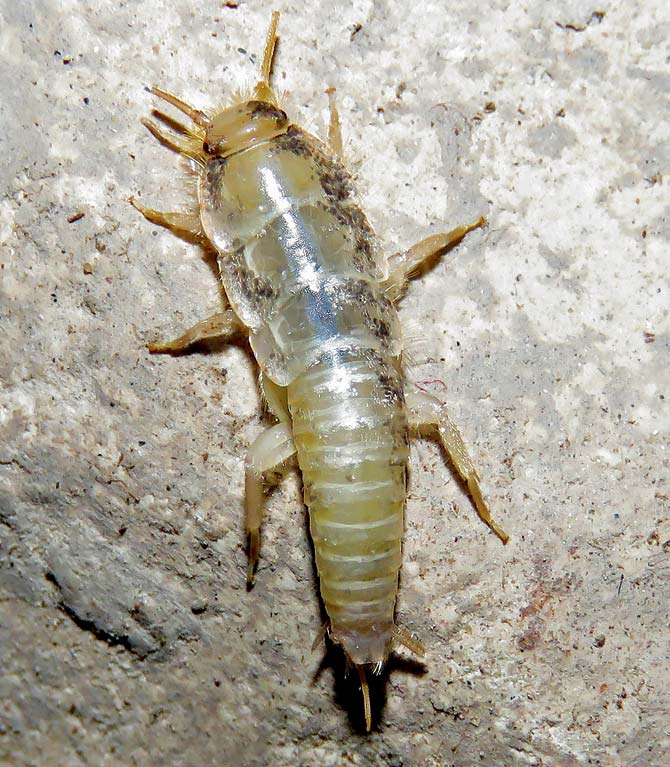You don’t have to be an evolutionary biologist to question how primitive creatures must’ve survived during their totally natural existence, say 100 or 200 million years ago

 You don’t have to be an evolutionary biologist to question how primitive creatures must’ve survived during their totally natural existence, say 100 or 200 million years ago. But I do agree that creatures that have spent a large time living a wild existence seem to be able to adapt to the immensely modified urban landscapes of today. This thought struck me when a friend sent me an image of a wingless insect for identification. I smiled to myself and in typical Sherlock Holmes style concluded, “He’s got books!”
You don’t have to be an evolutionary biologist to question how primitive creatures must’ve survived during their totally natural existence, say 100 or 200 million years ago. But I do agree that creatures that have spent a large time living a wild existence seem to be able to adapt to the immensely modified urban landscapes of today. This thought struck me when a friend sent me an image of a wingless insect for identification. I smiled to myself and in typical Sherlock Holmes style concluded, “He’s got books!”

Silverfish, a primitive wingless insect
ADVERTISEMENT
I hope you are sharper than Watson and have figured out that the creature under scrutiny was a Silverfish (Lepisma saccharina). I’m an ardent reader and have racks full of books on varied genre. Often when you pull out one of your old books to enjoy the smell of the paper and binding, a strange creature inevitably rushes out. The knowledge cramped inside these books takes you to enchanting places, but the wingless creatures making it their home aren’t looking to fly. They are here for the polysaccharide (starch) present in the book bindings. Silverfish, as they are commonly known, are not fish but insects belonging to Order Zygentoma (formerly Order Thysanura). They are characterised by their three caudal filaments and derive their common name from their silvery blue body and fish-like movement.
The species name ‘saccharina’ is an outcome of their preference for a sugary diet. Besides books, their urban diets and abodes may include carpets, tapestry, clothing, glue, paper, photos, cotton, linen, silk or even their own exuvia (moulted exoskeleton), plaster and sugar from varied sources. In addition, they attack leather, synthetic fabric and eat high–protein foods such as meat and dead insects.
Due to their existence across the globe in areas with high humidity (75-95%) and a lifespan reaching up to three years, silverfish are considered urban pests. They have an interesting courtship ritual, involving dance-like movements, wherein the female chases the male. The 80-100 eggs result in dull whitish nymphs that moult around 17-66 times, including moults after reaching adulthood. Spiders, earwigs and house centipedes are the natural predators of these swift nocturnal insects, but they hit a roadblock on encountering vertical walls. They generally avoid direct light and display punctuated movement, maybe as a predator avoidance technique. Lack of food even for a year doesn’t seem to threaten their life, as long as there is sufficient moisture.
Being nocturnal and reclusive, silverfish generally go unnoticed and cause immense damage to documents and property. Although they are known to contaminate food, they are not extensively exterminated as they do not transmit any disease. But, next time before you see a silverfish be sure to take a magnifying glass and watch their flat, elongated body closely.
Typically, all adult silverfish have two long antennae and small compound eyes at the tip of their head, a thorax bearing three pairs of legs and 12 tapering abdominal segments, ending in three long bristles. Typical of a book lover, we frequently place our books in moisture-free areas, to keep these primitive creatures at bay. But, do you realise that right in your private home-libraries, you are likely to meet the original, pre-historic bookworms, who along with jumping bristletails, are the oldest insects, inhabiting the Earth for over 400 million years.
Write in to Anand at sproutsenvttrust@gmail.com
 Subscribe today by clicking the link and stay updated with the latest news!" Click here!
Subscribe today by clicking the link and stay updated with the latest news!" Click here!







